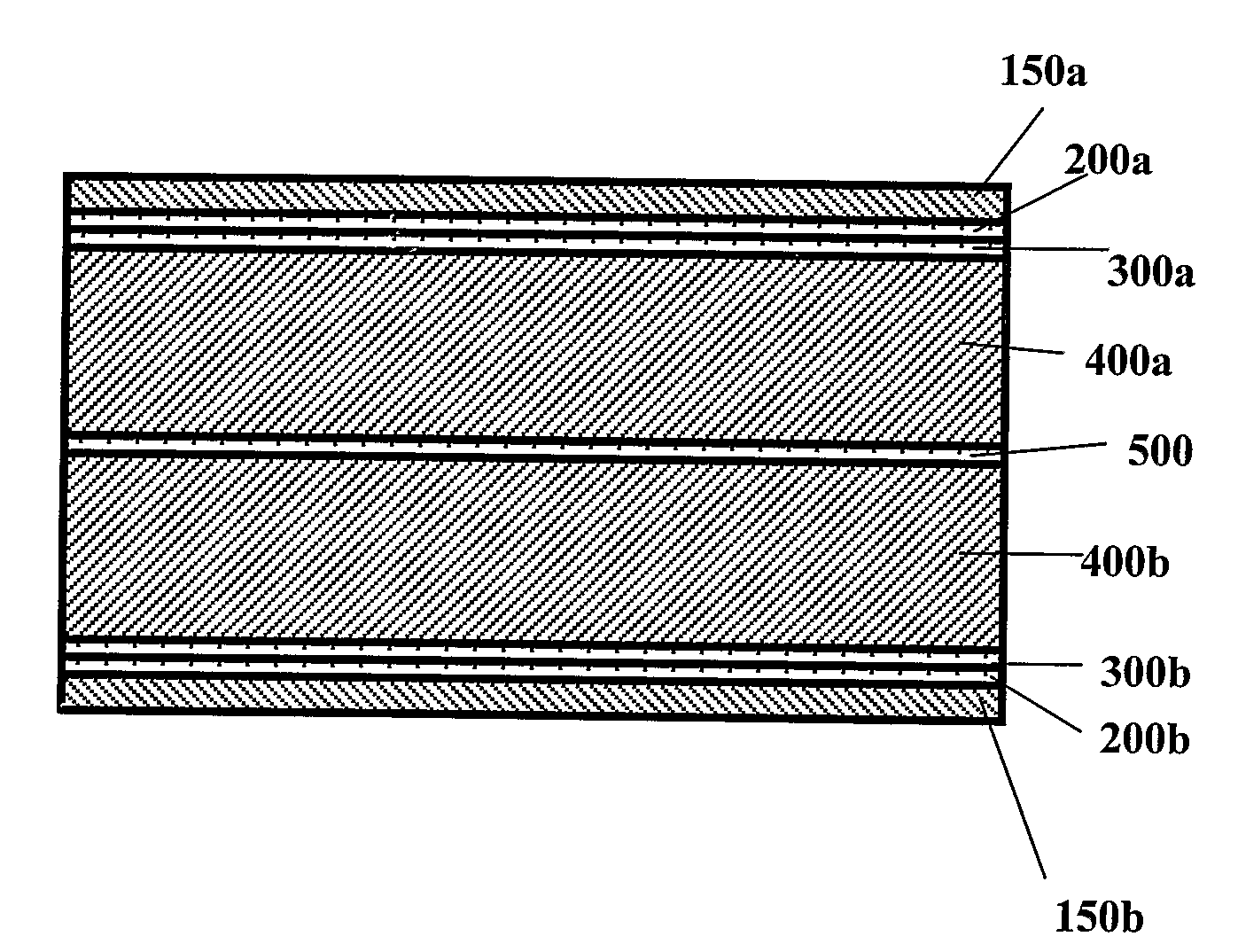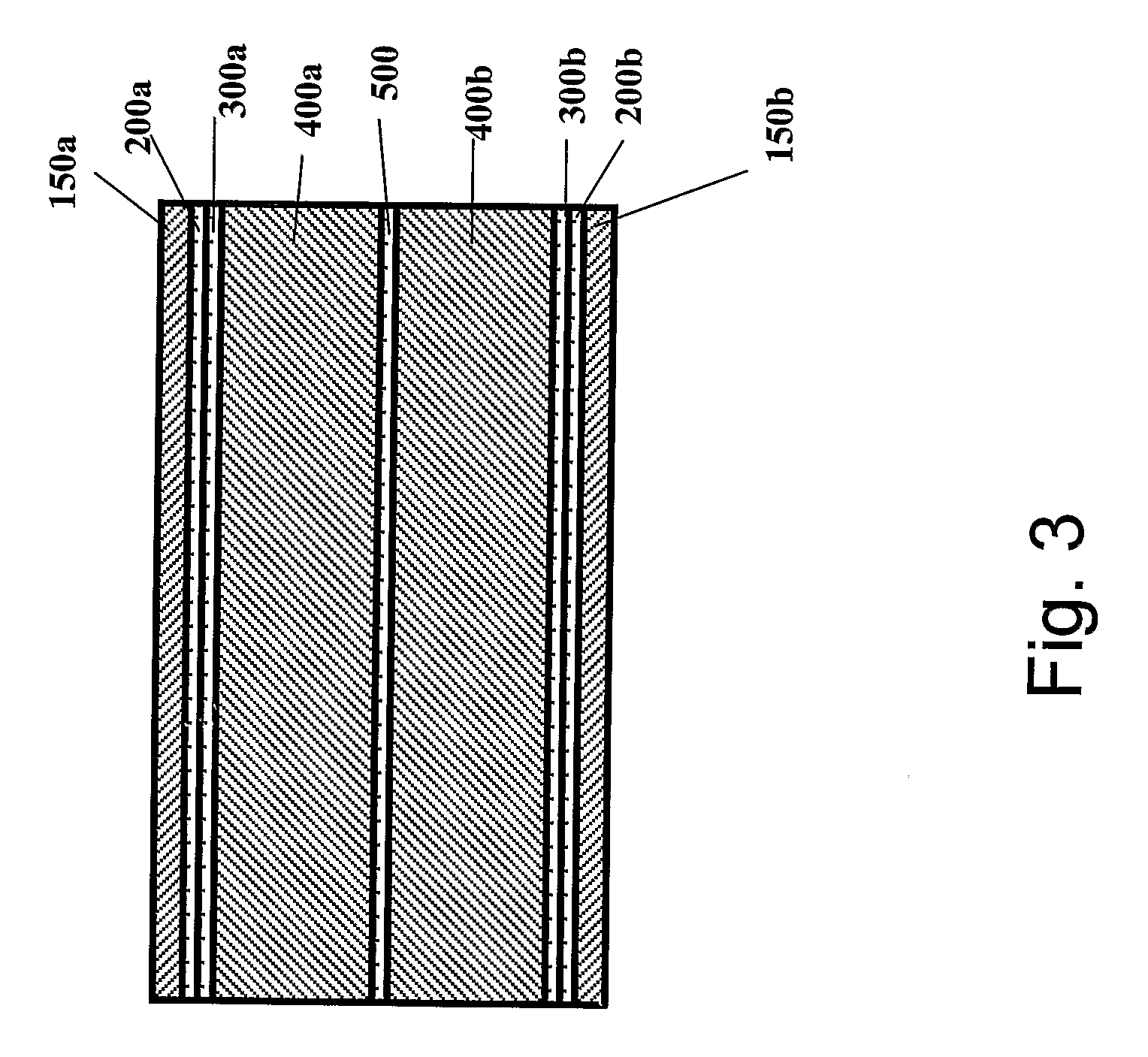Multi-Layered Product for Printed Circuit Boards, and a Process for Continuous Manufacture of Same
a technology of printed circuit boards and products, applied in the direction of magnetic recording, lamination, electrical equipment, etc., can solve the problems of low efficiency, circuitry is prone to loss, and part of transmitted energy is lost, and achieves the effect of reducing production costs and reducing production costs
- Summary
- Abstract
- Description
- Claims
- Application Information
AI Technical Summary
Benefits of technology
Problems solved by technology
Method used
Image
Examples
Embodiment Construction
[0032]It is important to note that the process of the invention is a continuous process, allowing circuit boards to be produced on an automated production line in a roll-to-roll manner. The speed of the continuous process is relatively high, and thus cost efficient compared to prior art processes, and the process allows production of 50-150 meters of multi-layered product for each minute of operation of the production process.
[0033]FIG. 1 illustrates the first segment of the production line used to produce the multi-layered product. Referring to FIG. 1, conductive metal foil, for instance electrodeposited copper foil, is unwound in an unwinding station (10). Preferably, as a first step in the process of the invention, the conductive metal foil is primed at a priming station (100), to increase its adhesive properties. The conductive foil is primed with a material such as R-1559 (produced by Mica Corp., Shelton, Conn.) which is an aqueous primer comprising polypropylene (PP) molecules...
PUM
| Property | Measurement | Unit |
|---|---|---|
| temperature | aaaaa | aaaaa |
| temperature | aaaaa | aaaaa |
| temperature | aaaaa | aaaaa |
Abstract
Description
Claims
Application Information
 Login to View More
Login to View More - R&D
- Intellectual Property
- Life Sciences
- Materials
- Tech Scout
- Unparalleled Data Quality
- Higher Quality Content
- 60% Fewer Hallucinations
Browse by: Latest US Patents, China's latest patents, Technical Efficacy Thesaurus, Application Domain, Technology Topic, Popular Technical Reports.
© 2025 PatSnap. All rights reserved.Legal|Privacy policy|Modern Slavery Act Transparency Statement|Sitemap|About US| Contact US: help@patsnap.com



